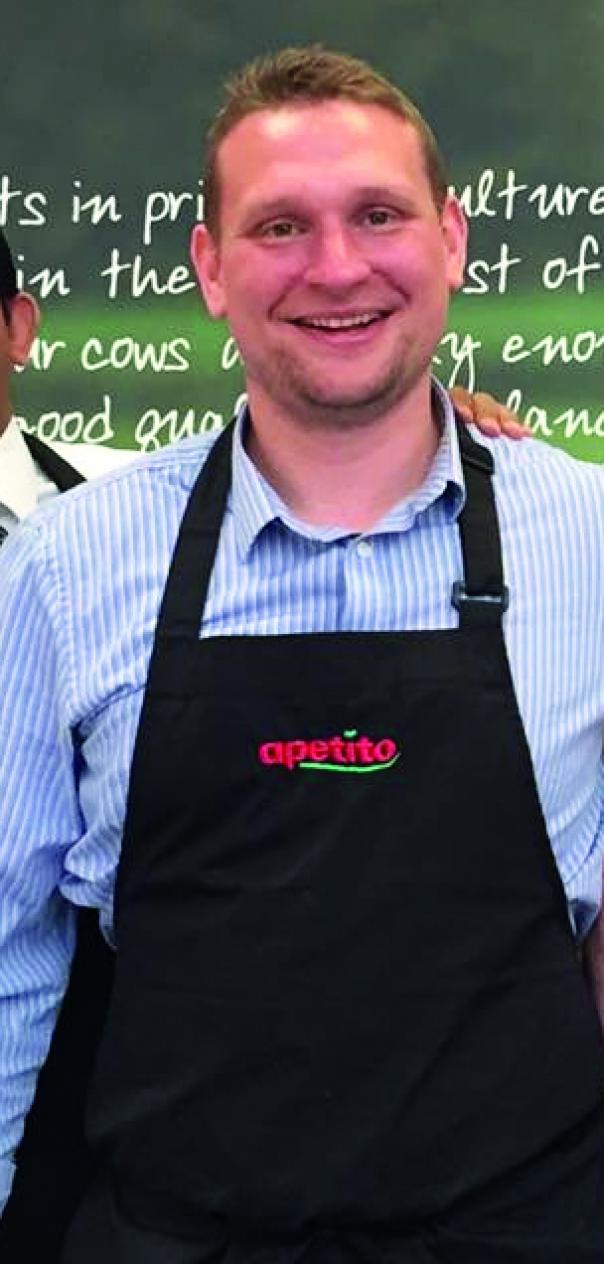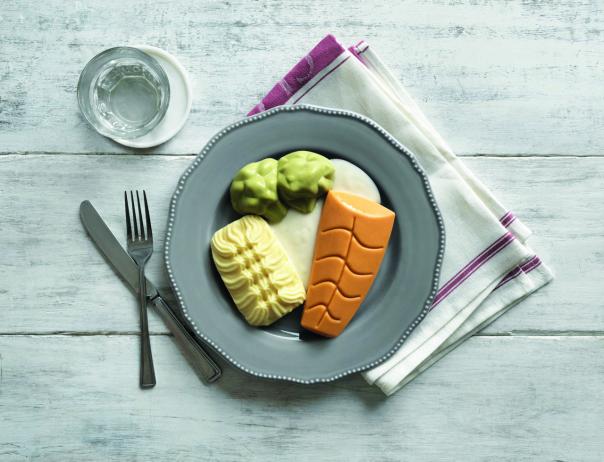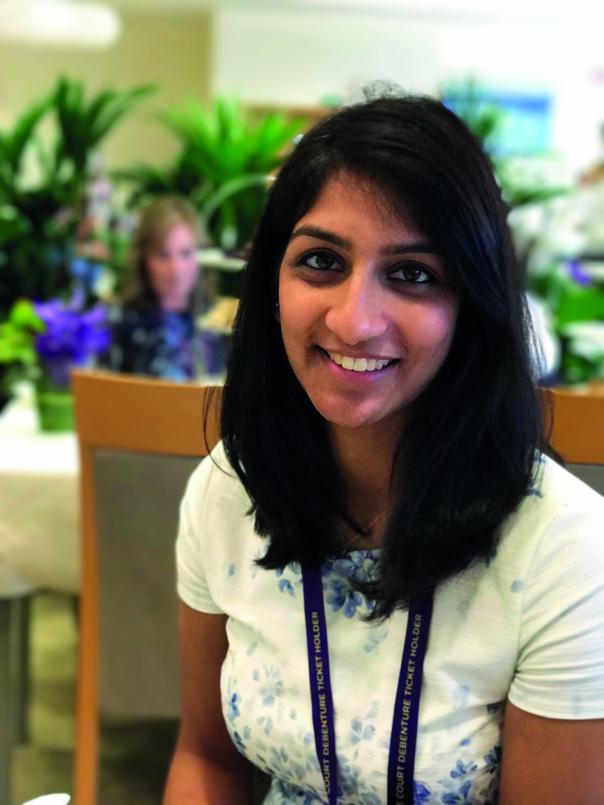


Swallowing Awareness Day fell halfway through Nutrition and Hydration Week this year, and to mark the occasion Saachi Patel, dietitian at Serco, and Mark Edell, Apetito’s training and operations manager, took on the challenge of following a thick purée diet – known as Texture C in the four-category list of dysphagia food descriptors – for a week.
Saachi explains why she wanted to get involved: “My professional aim, as a dietitian, was to raise awareness of dysphagia, its impact on the patients we look after in hospital and the reasons why providing the correct meal is integral to patient safety.
“But I also wanted to understand the challenges patients face when following such a limiting and prescriptive diet and why compliance might be difficult.
“My personal goal was not only to increase awareness of dysphagia, but also to raise money for One Kind Act (OKA), a charity I chose due to its hard work in supporting causes and raising money in aid of brain injury.”
Both Saachi and Mark say they hoped the challenge would allow them to gain a better understanding of the physical and mental difficulties dysphagia patients face when following such a restricted diet.
Day One
It quickly became clear to Mark and Saachi on their first day that this was going to be a tough challenge. Mark started the week weighing in at 91kg (14st 4lb). His aim for the challenge was to keep a constant weight throughout.
Saachi explains how her first day went: “Going into the office knowing colleagues would be tucking into solid food around me was difficult, especially when they decided to bring out cake.
“Despite this, I went to the fridge and tucked into a chocolate mousse so I didn’t feel I was missing out. Being constantly taunted with delicious meals was a struggle.”
Day Two
Mark started the day with porridge, followed by a puréed steak for lunch. Dinner consisted of a single yogurt and he was already missing food with a recognisable texture. That evening he went for a 10k run, which he admits he found extremely challenging because he simply wasn’t taking in enough calories.
Saachi found herself with a similar problem. She says: “I realised it was difficult to achieve the right calorie and protein intake each day. I decided at the end of the week I would compare the number of calories I had consumed compared to a week on solid food. This exercise would help me to understand the challenges patients face and the provisions we can put in place to ensure they are gaining the right amount.
“If I’m struggling to get all my calories with a full appetite, it must be harder for someone in hospital, for example, who has no appetite.
“I can then begin to think about menu designs to help patients meet their nutritional intake requirements.”
Day Three
To try to increase her calorie intake, Saachi started the day with a milky hot chocolate, which is far more nourishing than tea. During lunch, she encouraged various colleagues to try the meals. While all agreed the food tasted delicious, they said the texture created a whole new eating experience.
“Foods, such as mashed potato, are easy to eat as they are similar in texture to what you would expect. However, for patients in hospital it’s not very nutritious. It’s easy to see how dysphagia patients can become malnourished, as they might stick to easy meals such as mashed potato and gravy.”
That evening, Saachi decided to make a puréed lasagne. She continues: “It was a lot of effort to make, so I completely understand why dysphagia patients would rather have prepared texture-modified meals.
“It made me think about the support available to patients and their families, regarding making meals to a safe and correct consistency. It would be useful if there were practical programmes available to help those with dysphagia, and those who cook for them, create visually appealing meals.”
Day Four
Day four of the challenge was one of Saachi’s more sociable office days. But not being able to take part in some of the activities made her realise the daily struggles that dysphagia patients must face.
Many social events revolve around food, so it can be easy to feel isolated if you can’t then eat it.
She explains: “I felt embarrassed to take my puréed meal out in a public place because it was different to what everyone else was eating. This highlighted to me the issues dysphagia patients frequently face when eating in a social situation outside of the community.”
Day Five
Saachi met Mark for lunch and says one of the first things she noticed was his obvious loss of weight. She was not wrong. Following a weigh-in earlier that morning, Mark found he had lost 4kg (9lb), which she felt demonstrated sharply just how difficult it must be for hospital patients with a reduced appetite to maintain a healthy weight.
She says: “I realised I had consumed fewer than 500kcal all day because I didn’t enjoy the meals selected. If patients don’t enjoy their meals they don’t have much choice about what to eat. They either eat or risk becoming malnourished.
That’s why it’s so important to have an extensive range of meals to help patients meet their nutritional needs. There are provisions out there to make mealtimes more exciting, and from here onwards, we need to think about what we can do to support patients who don’t want to finish their entire meal.”
Day Six
While at a family event, Saachi found it very hard not to not eat her grandmother’s home-cooked food.
“Eating often triggers memories and brings back feelings of happiness. Patients with dysphagia are unable to relive those memories [at least for the time being] and have to create new ones around puréed food.
“Many dysphagia patients still strive to continue to live a normal social life, which makes me wonder what I can do to make dysphagia normal in society.”
Day Seven
Looking back on his week, Mark concludes: “Being on a restrictive diet was difficult. There are no other words I can use to describe how I felt last week. The challenge allowed me to learn some of the compliance issues patients are faced with when on a dysphagia diet – it goes way beyond texture and taste fatigue. I ended up losing over half a stone.”
Saachi adds: “Going forward, we can work together and must put ourselves in the shoes of the patient. It’s one thing understanding what dysphagia is, but unless we can understand the emotional elements attached to having dysphagia, our catering provision will always be one-dimensional.
“The week taught me I need to go above and beyond what is written down. I need to work on how we can bring excitement back to a patient’s life when it comes to meals.”